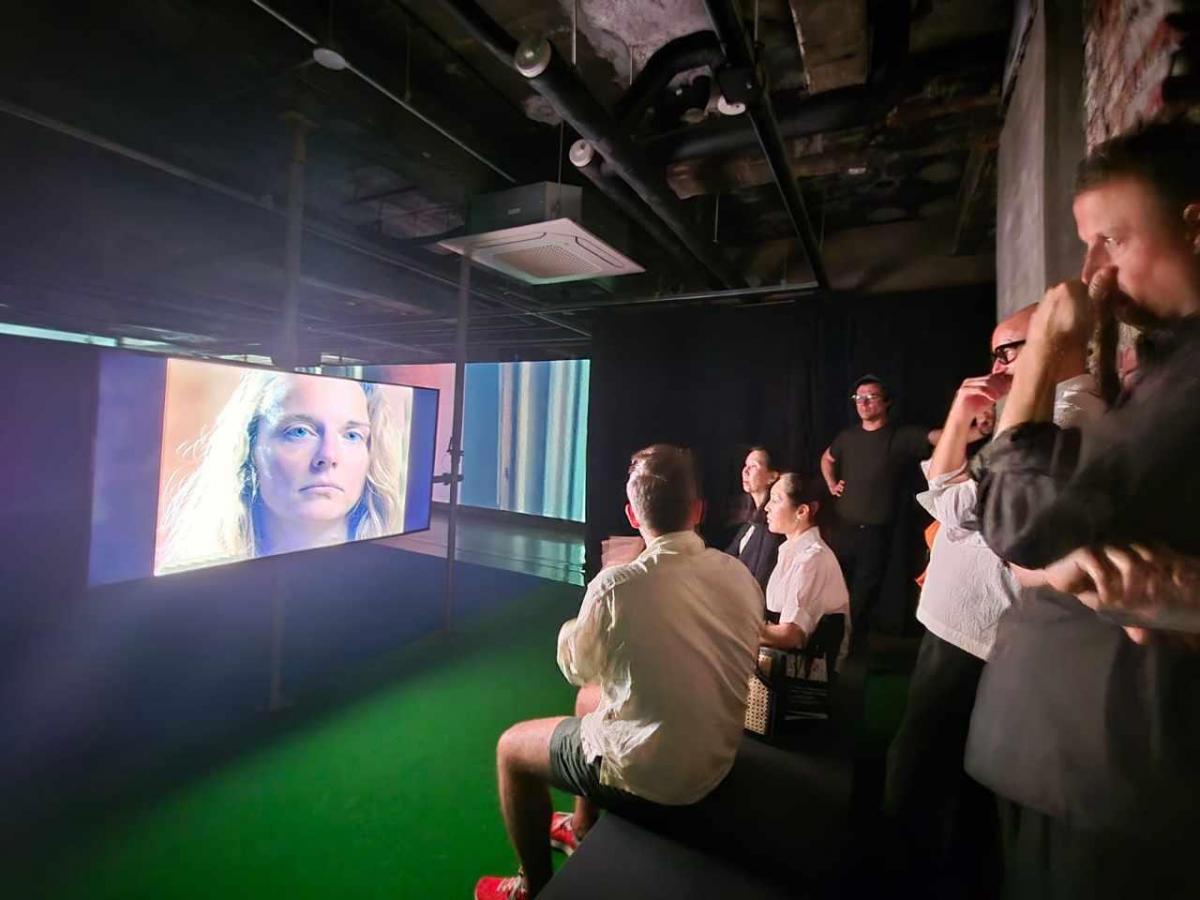
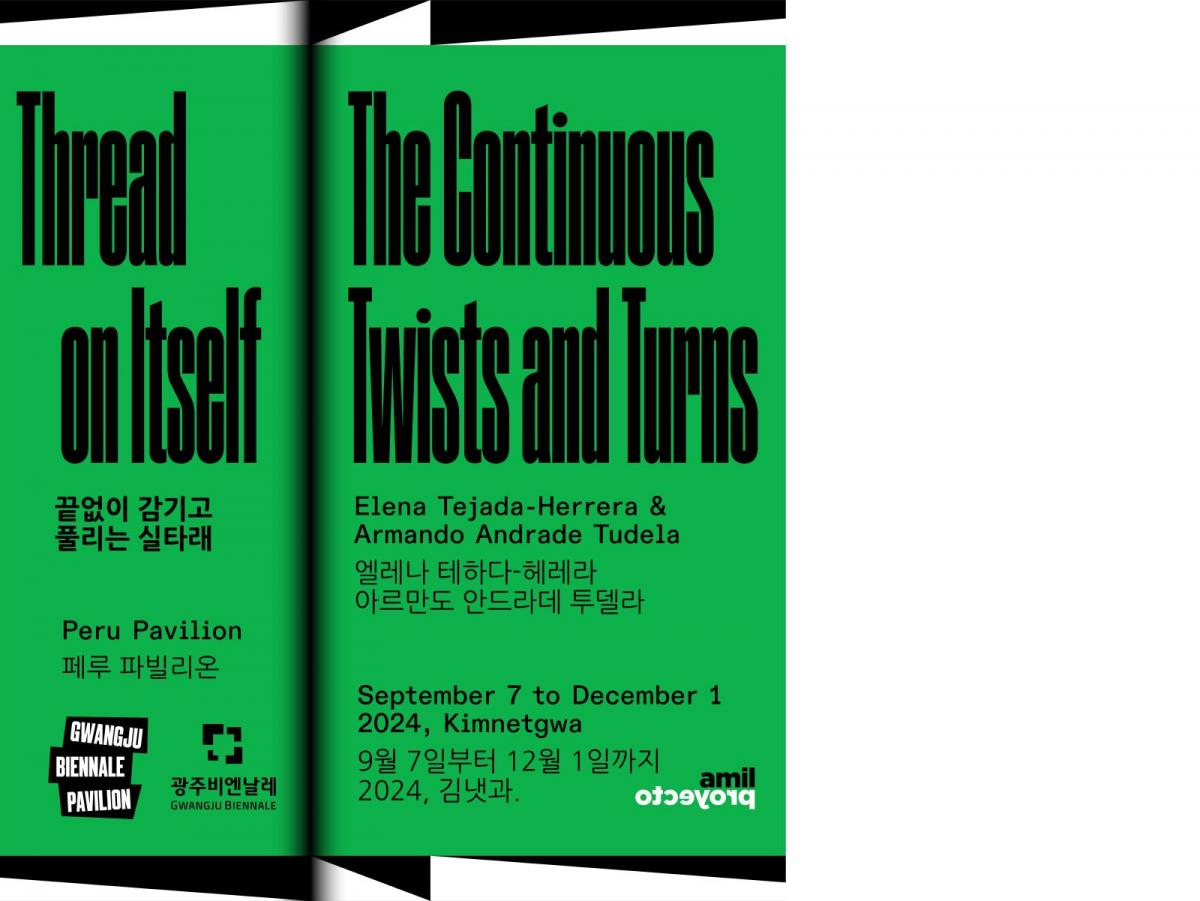
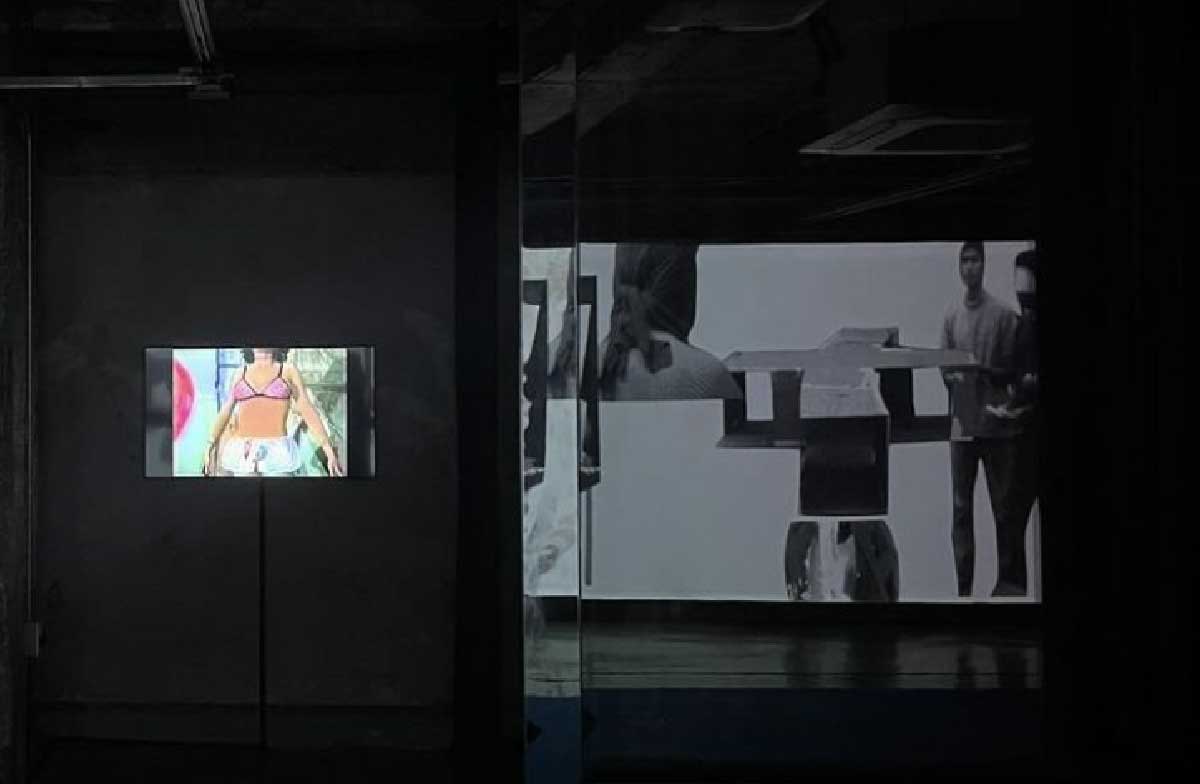
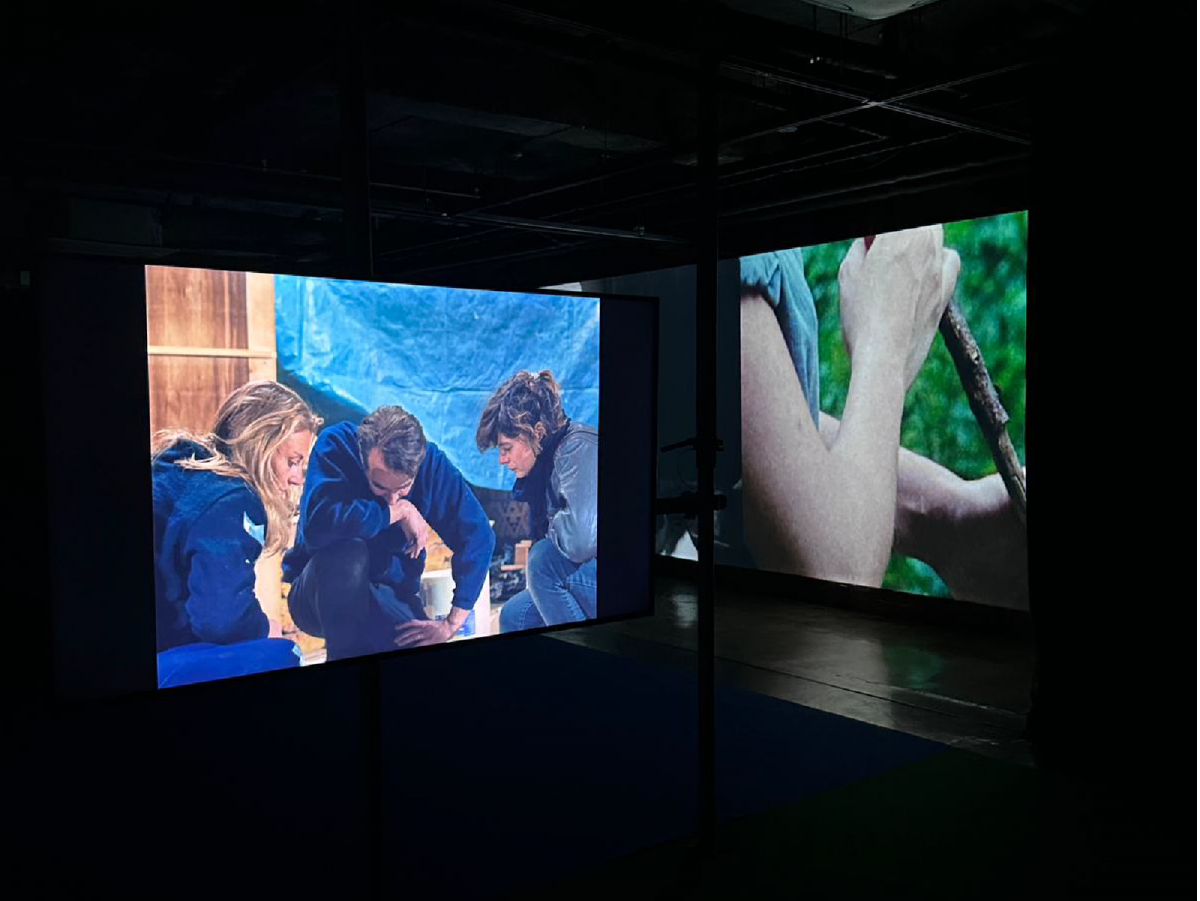
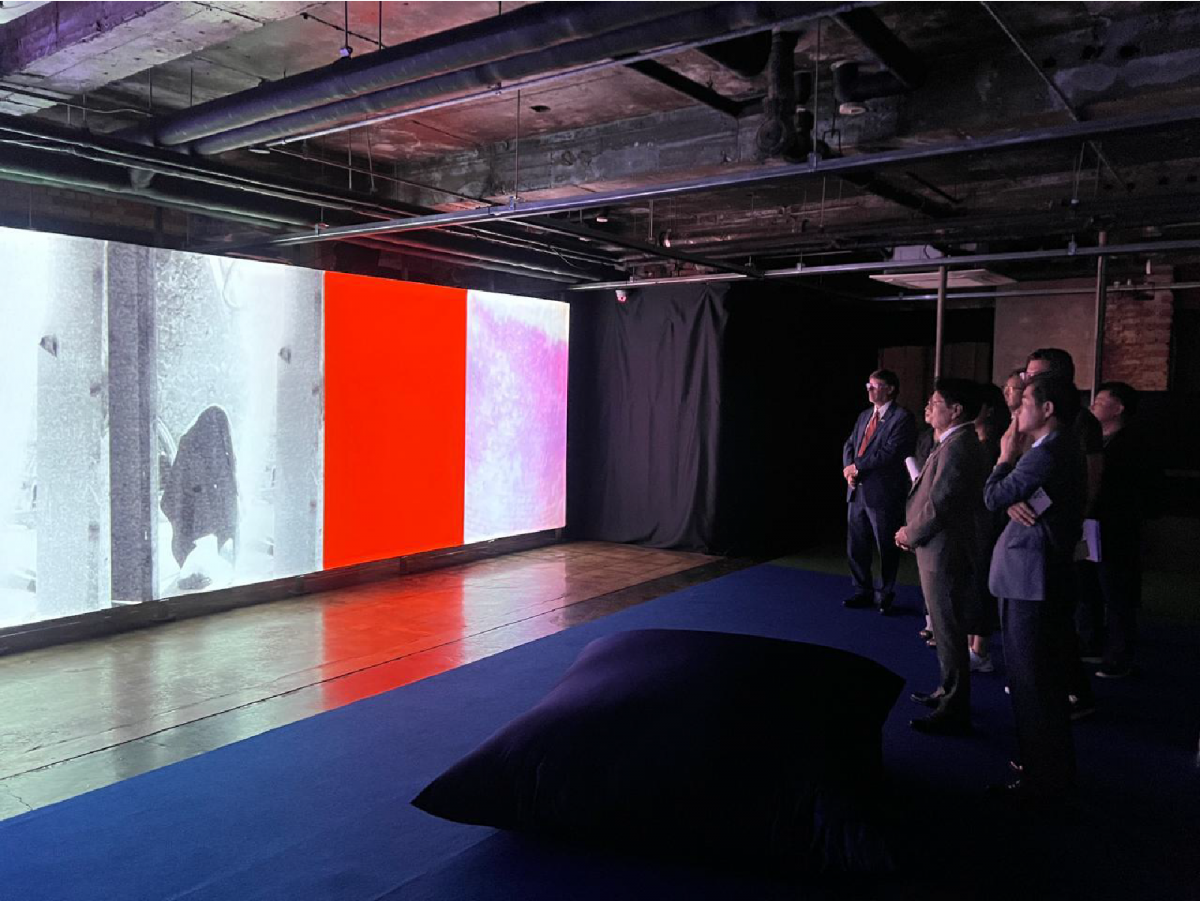
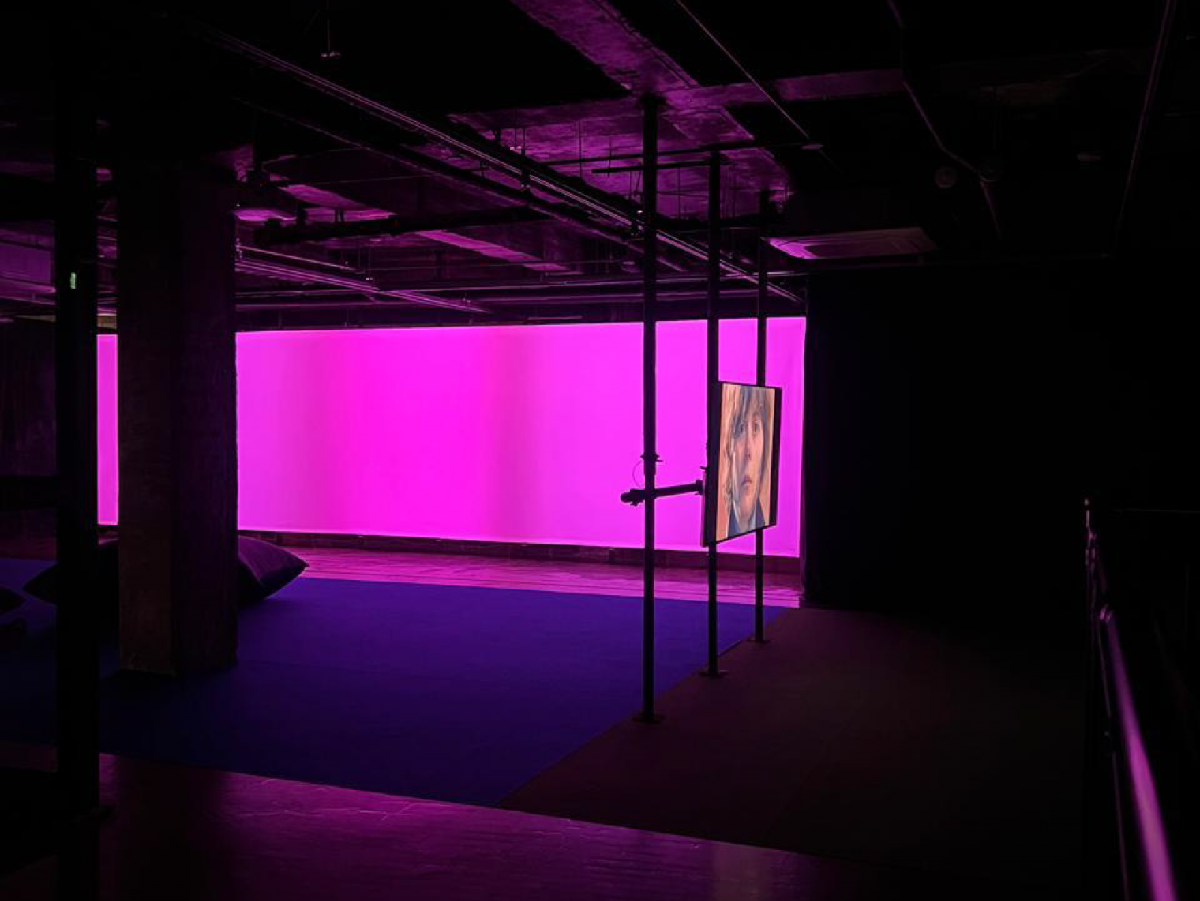
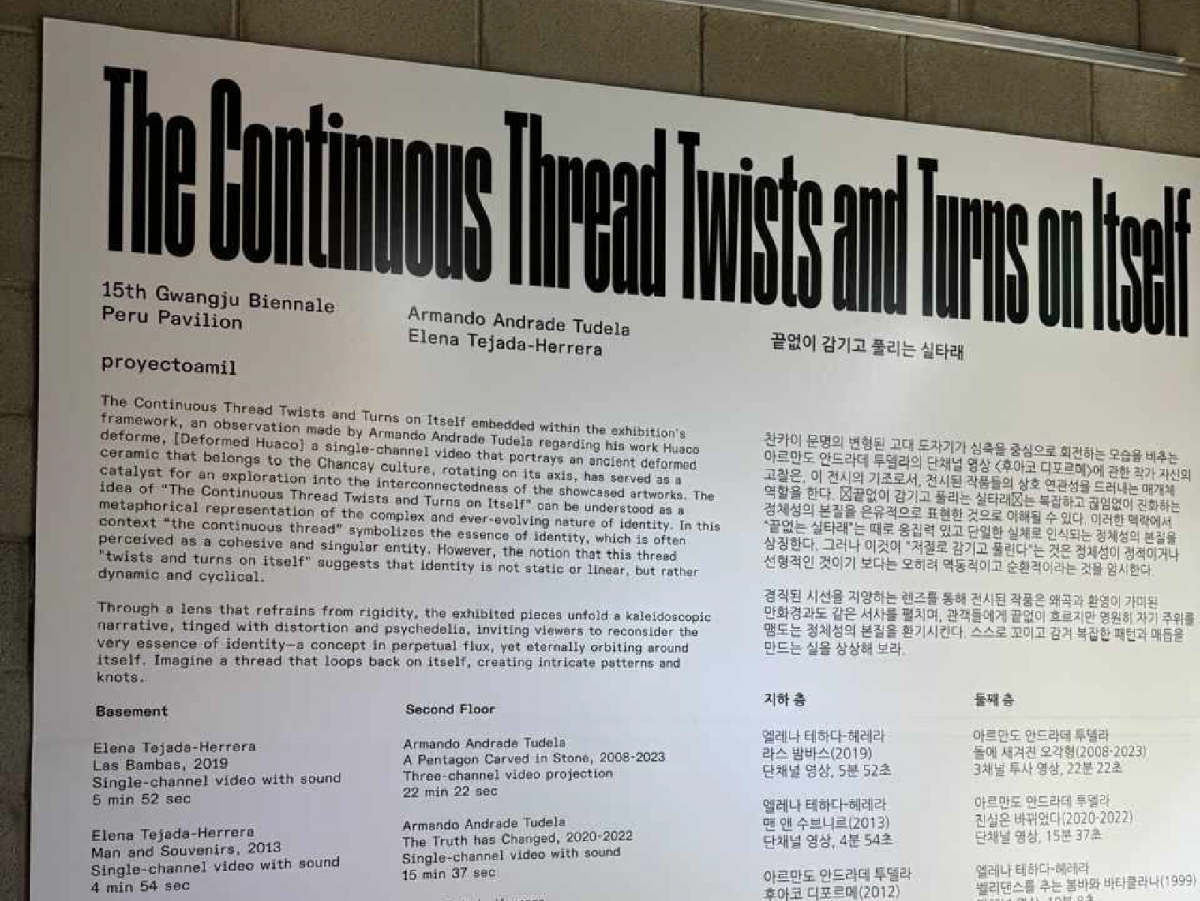
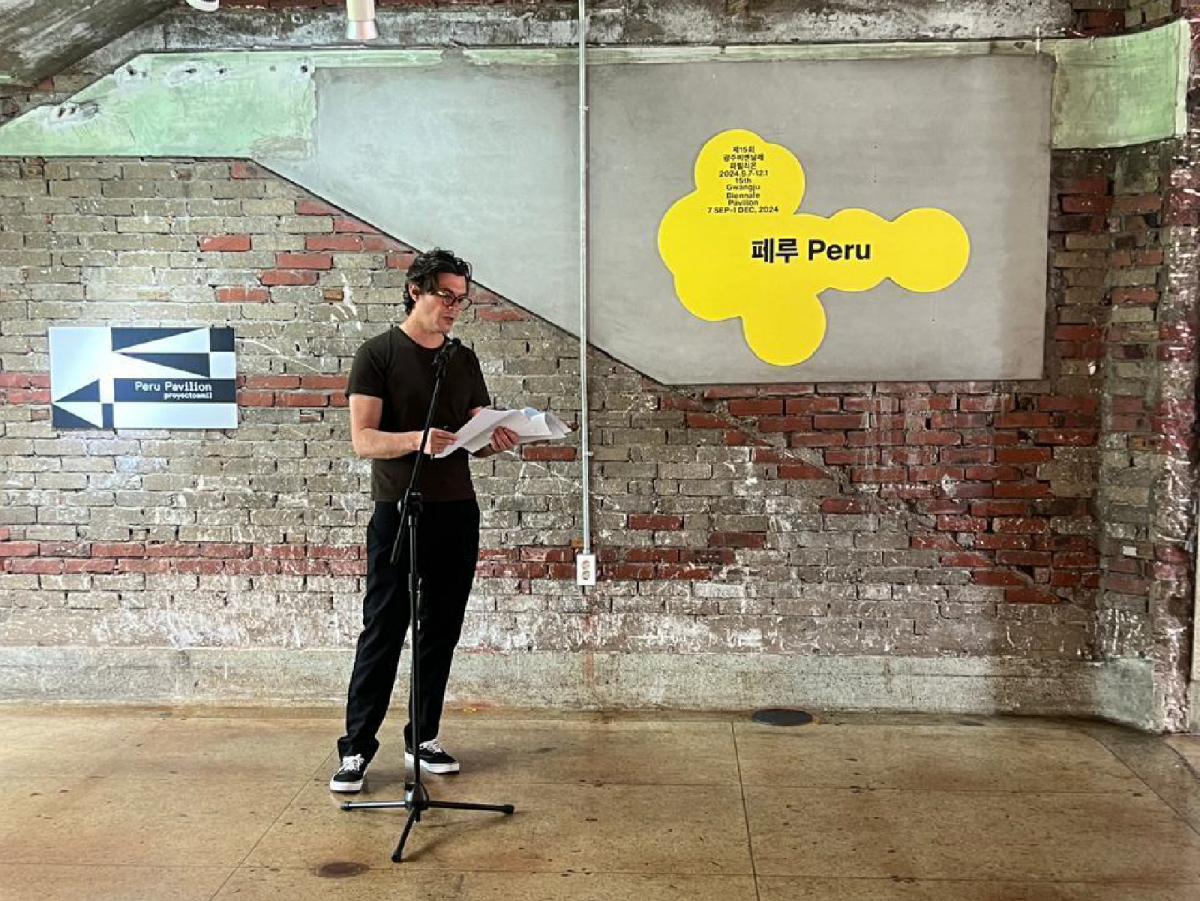
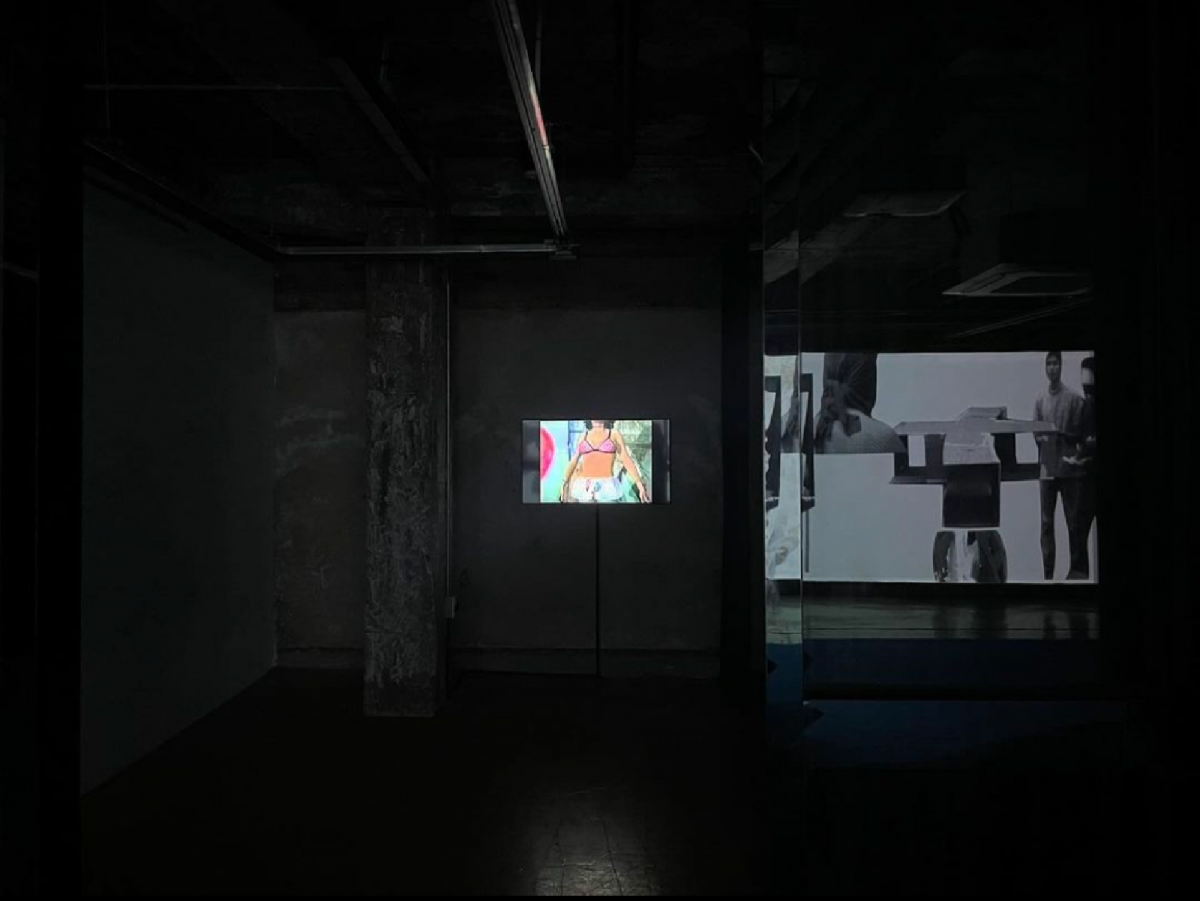

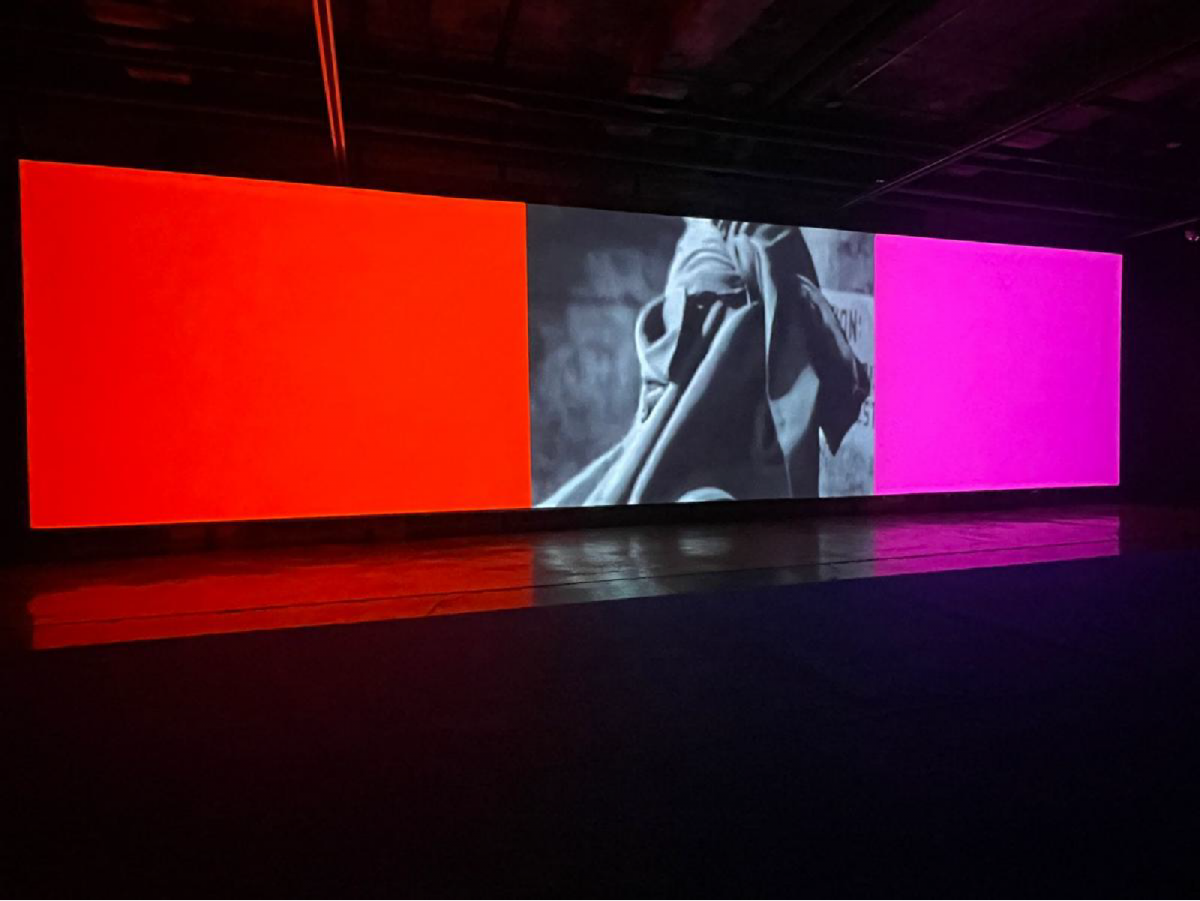
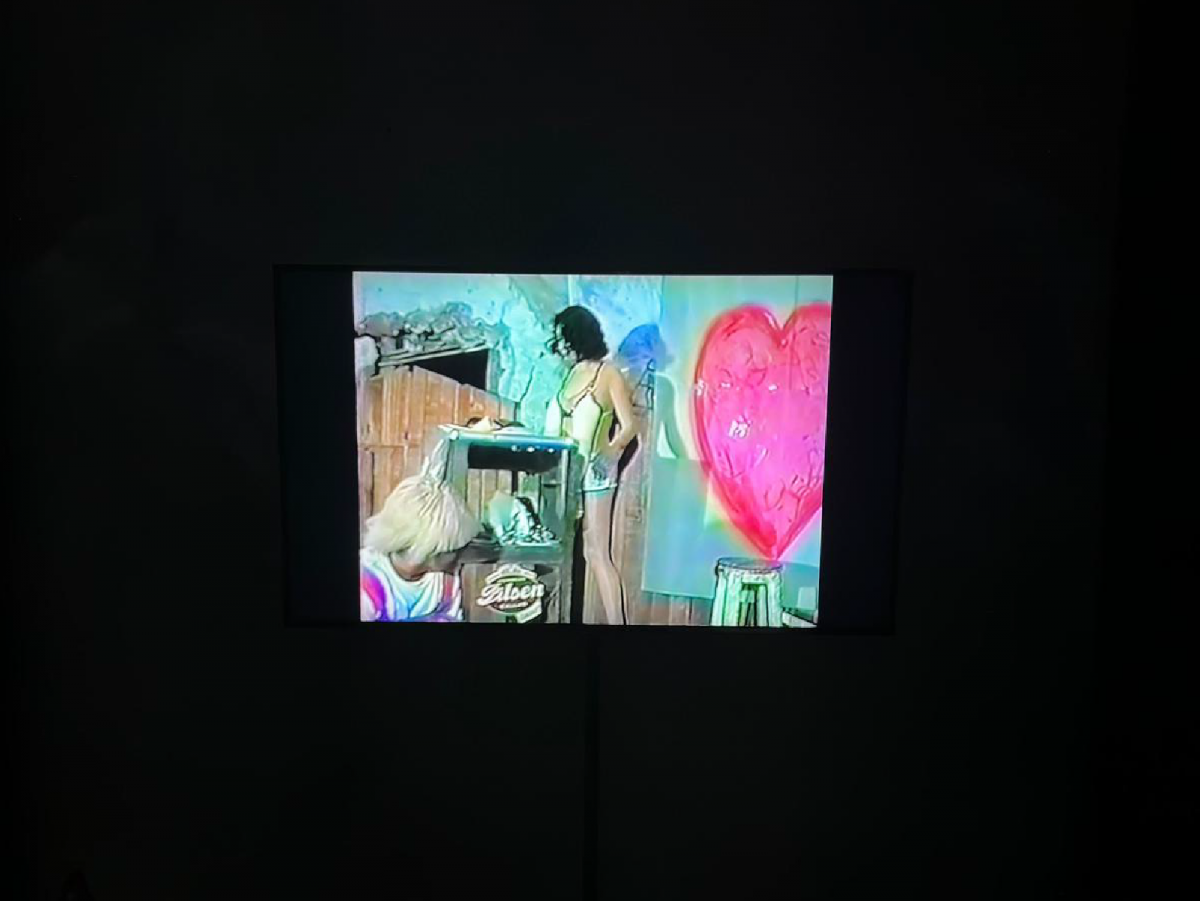
Elena Tejada-Herrera & Armando Andrade Tudela at 15th Gwangju Biennale Pavilion
Opening of the Peru Pavilion: 5 September 2024, 11am
7 September – 1 December 2024
For the 2024 Gwangju Biennale, proyectoamil presents the video works of Elena Tejada-Herrera and Armando Andrade Tudela in the exhibition The Continuous Thread Twists and Turns on Itself, a metaphor for the intricate and ever-changing nature of identity.
Embedded within the exhibition’s framework, an observation made by Armando Andrade Tudela regarding his work Huaco deforme, [Deformed Huaco] a single-channel video that portrays an ancient deformed ceramic that belongs to the Chancay culture, rotating on its axis, has served as a catalyst for an exploration into the interconnectedness of the showcased artworks.
The idea of The Continuous Thread Twists and Turns on Itself can be understood as a metaphorical representation of the complex and ever-evolving nature of identity. In this context “the continuous thread” symbolizes the essence of identity, which is often perceived as a cohesive and singular entity. However, the notion that this thread “twists and turns on itself” suggests that identity is not static or linear, but rather dynamic and cyclical. This observation, seemingly innocuous at first glance, has evolved into a poignant starting point, inciting a deeper contemplation on the fluidity and dynamism inherent in notions of identity.
Armando Andrade Tudela’s featured works offer a captivating exploration of visual storytelling and historical discourse: The triptych Un pentágono tallado en piedra presents a visual montage of the artist’s films produced since 2008, interweaving visual signs to generate new chains of content. Huaco deforme challenges perceptions of collective heritage by exploring deformity and singularity. La verdad ha cambiado delves into the complex relationships between pedagogy, indoctrination, and violence in Peru’s recent history, employing a dynamic interplay of images and performances.
Elena Tejada-Herrera’s work provides a thought-provoking commentary on socio-political issues: Las Bambas poignantly addresses the impact of extractive activities on communities, particularly women, through a multimedia display of fabric-clad figures amidst changing landscapes. Bomba and the Bataclana in the Belly Dance challenges patriarchal gender constructions through street performance, celebrating popular cultural expressions. Furthermore, Man and Souvenirs explores traditional subject matters through a contemporary lens, incorporating electronic means and humor to deconstruct societal norms.
Through a lens that refrains from rigidity, the exhibited pieces unfold a kaleidoscopic narrative, tinged with distortion and psychedelia, inviting viewers to reconsider the very essence of identity — a concept in perpetual flux, yet eternally orbiting around itself. Imagine a thread that loops back on itself, creating intricate patterns and knots. Similarly, identity is not a straightforward journey but one filled with twists, turns, and intersections. It encompasses various layers, influences, and experiences that shape and reshape one’s sense of self over time. This metaphor implies that identity is not fixed but flux, constantly being renegotiated and redefined through interactions with others, societal norms, cultural influences, and personal reflections. Just as a thread weaves through fabric, connecting disparate elements to form a coherent whole, identity is woven from a multitude of factors that intertwine and interact in complex ways.
Central to the exhibition is the portrayal of identity as a malleable construct, interlaced with themes of generational shift as depicted by artists Elena Tejada-Herrera and Armando Andrade Tudela. Their video works and installations serve as visceral responses to the urban backdrop, grappling with the specter of violence and repression while asserting a distinct Peruvian identity within a global tapestry. Explorations into systemic repression, racial dynamics, gender constructs, post-colonial legacies, and homophobia emerge as prominent motifs, showcasing a keen contemporary consciousness of societal strife.
Despite variances in age and gender among the artists, a unifying thread binds their distinct narratives, rendering the exhibition space a nexus of inclusivity where manifold perspectives converge. The exhibition resonates with a cacophony of voices and narratives, offering a nuanced portrayal of contemporary Peruvian identity with repercussions far beyond its geographical confines.
By acknowledging identity’s continuous and cyclical nature, we can embrace the subtle distinctions and contradictions inherent in our sense of self. It invites us to explore the diversity and interconnectedness of human experience, recognizing that identity is a journey marked by exploration, discovery, and transformation.